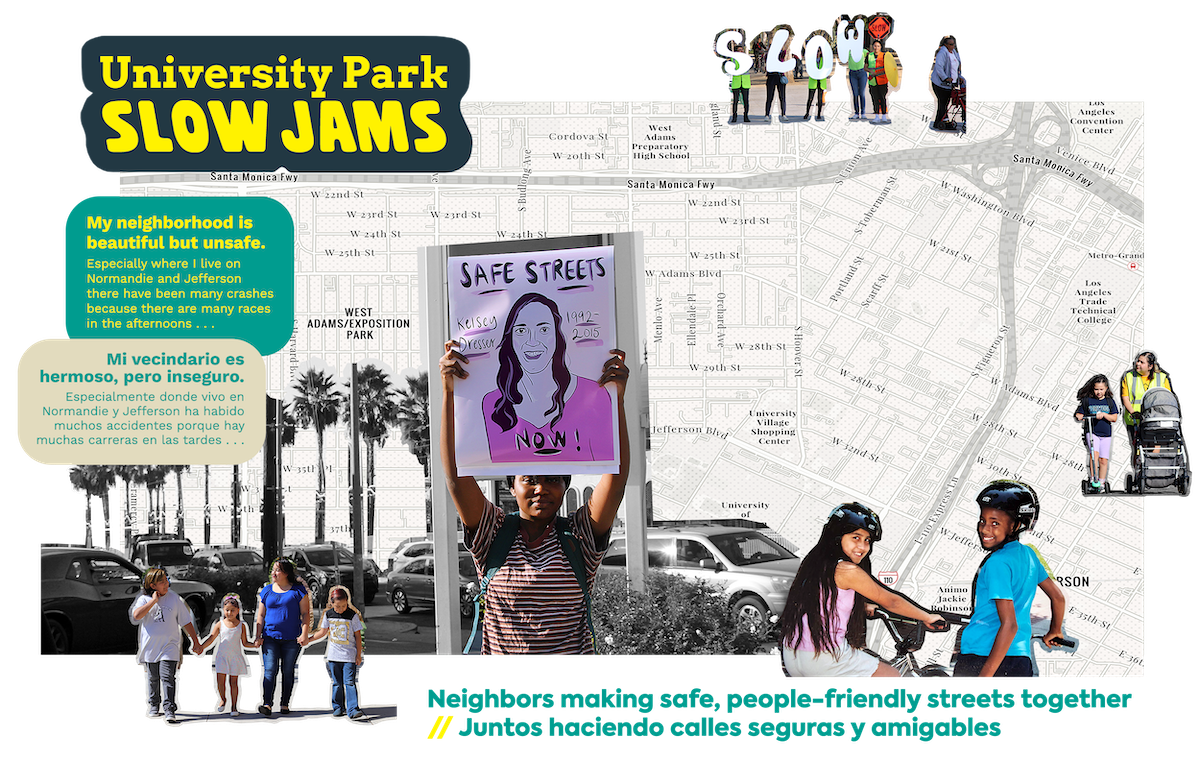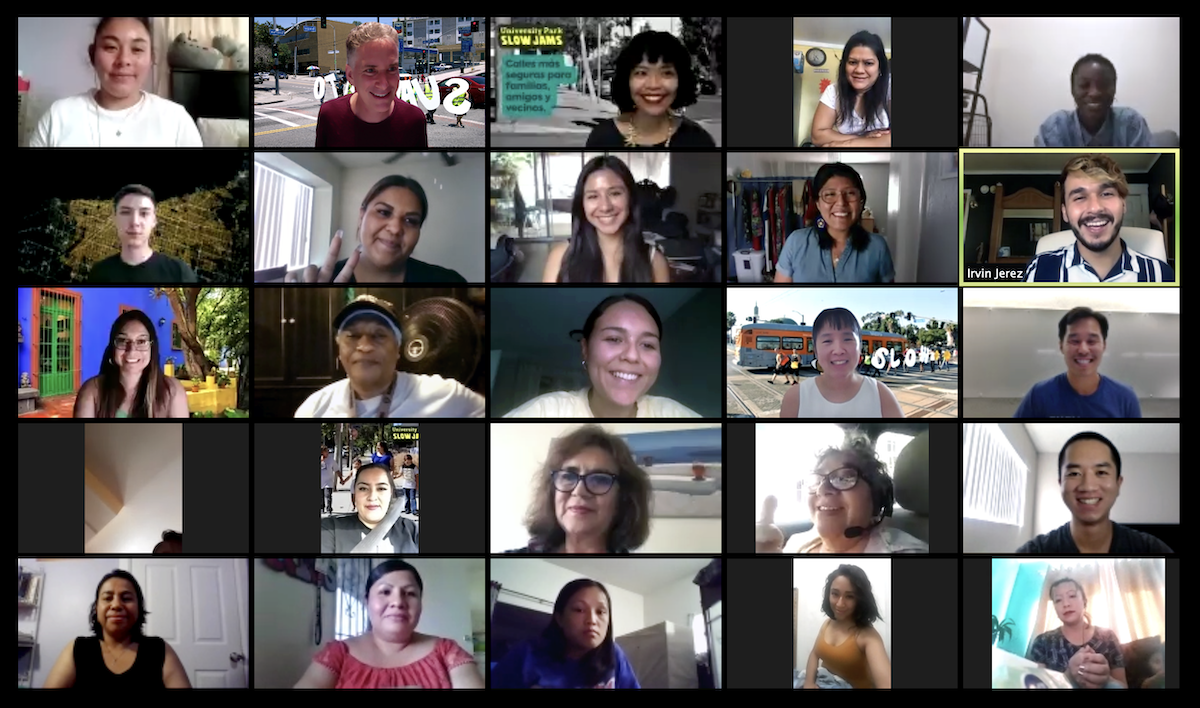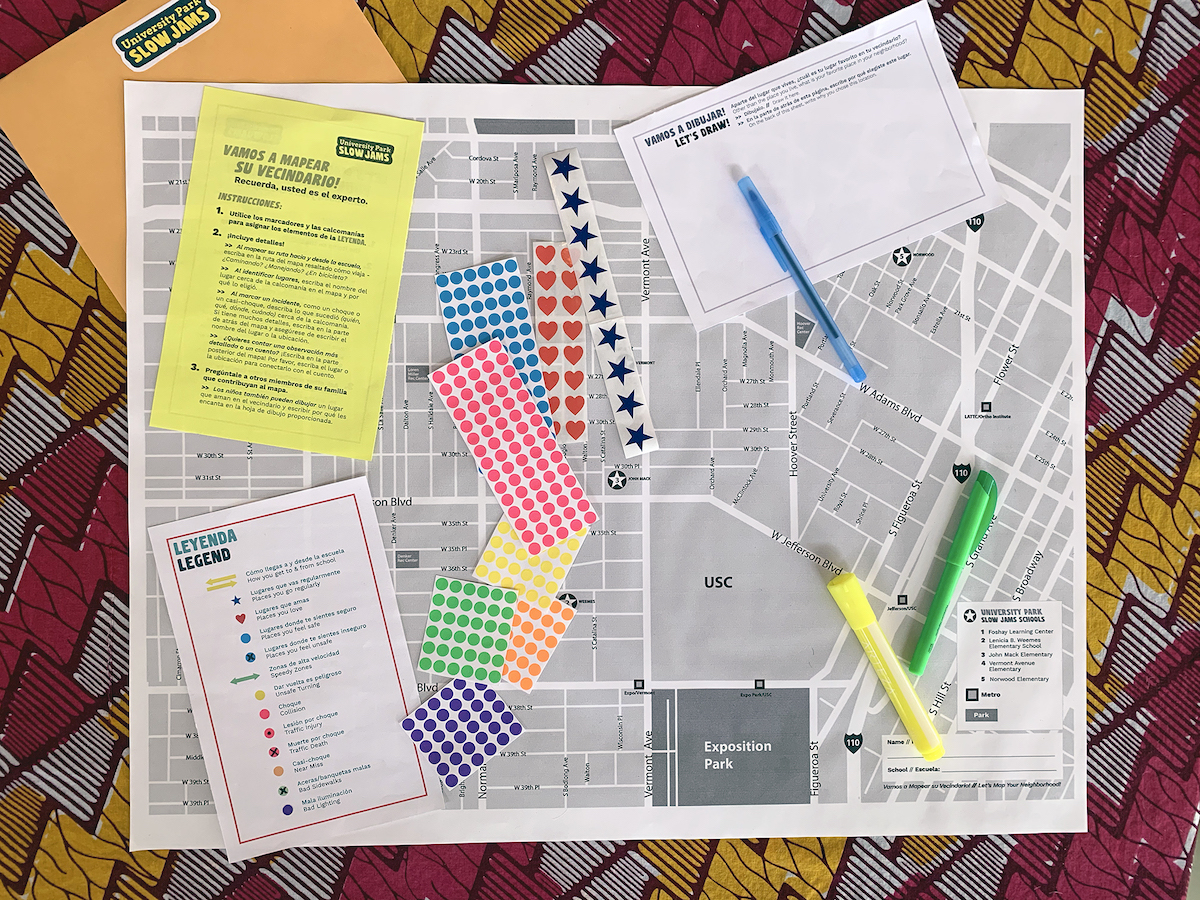
15 Jan Hybrid organizing for safe streets
Parents gather over Zoom and make the case for action.
In 2020 streets became more dangerous. But sustained in-person engagement to address this danger became nearly impossible. Despite these challenges, the University Park Slow Jams partners and USC Kid Watch parent network got together repeatedly over the digital Zoom waves to develop a creative model for what hybrid organizing and capacity-building around safe streets can look like as we move forward – in the pandemic and beyond.
At the start of the pandemic, the University Park Slow Partners – Los Angeles Walks, Public Matters, USC Kid Watch parent network, and USC Sol Price School of Public Policy – realized that our tactics would need to change. In the past, Slow Jams have begun first with street-level actions that connect with people on a visual and physical level, bringing people over time into the deeper work of identifying local solutions to traffic violence.
This year, though, we had to create this connection without the casual, yet meaningful fun of an actual Slow Jam. We had to create meaning for people in the context of virtual interactions, deepening relationships and connections to each other and the topic over time. To do this, we inverted our work to focus first on story-driven asset mapping and relationship-building.
Traditional and city-held statistics are missing important information; they under-represent the invisible toll of collision near-misses and incidents where people do not report a crash. Through a series of bilingual Zoom sessions with physical and virtual activities, the partners worked with parents to fill this data gap – directly engaging and drawing on the parents’ local knowledge, lived experience, and expertise.
The first round of mapping workshops included the distribution of colorful map packets to 40 families to collectively discuss and document neighborhood assets, how traffic safety impacts local behavior and use of neighborhood streets, and incidents of traffic violence. From there, parents participated in a second round of sessions about street safety infrastructure and how changes to support greater safety happen. These capacity-building workshops led to a third series of train-the-trainer style sessions that prepared parents to carry out their own (physically distanced and COVID-safe) neighborhood audits, which include mapping and photographing local conditions (What’s a walk audit?).
The sessions revealed the quiet struggle of everyday traffic violence in the neighborhood, while also serving as a respite for connection and purpose during the enduring pandemic. They model a new way of gathering with purpose, and have pushed the partners’ creativity and use of technology in new ways in order to ensure participation across the unevenness of our current virtual environment.
The data from the past six months of virtual workshops is being used to create a data-rich Story Map (What’s a Story Map?) that can be shared with other neighborhood audiences, added to as the project connects with more people, and used with local elected officials, school leadership and policy makers to advocate for interventions and infrastructure fixes. It will be the foundation for creative actions and in-person gatherings as the pandemic subsides.
More on our progress soon! To learn more about University Park Slow Jams, please visit our project page.
UPSJ has received funding from LA2050, USC Arts in Action, part of USC Visions and Voices: The Arts and Humanities Initiative, USC Good Neighbors, the Go Human Campaign, Southern California Association of Governments and the California Office of Traffic Safety.


